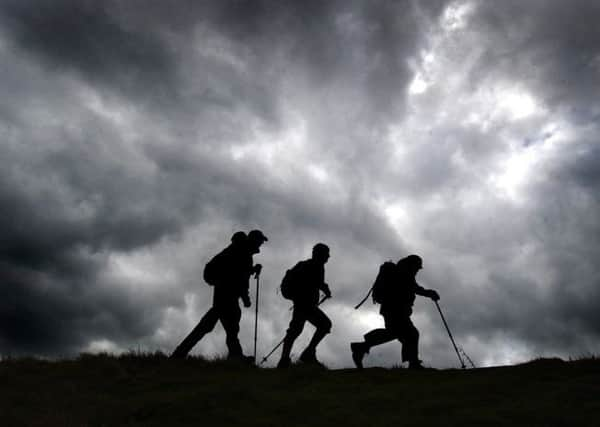Why do people go walking?


As a child Peter Owen Jones walked for hours. During the summer holidays he could wear out a pair of shoes exploring the fields which lay just beyond his family home. Then he stopped.
There was no particular reason, just that other things got in the way. As he grew up there were no six week holidays to idle away and whenever he did have an hour spare there always seemed to be something more pressing which needed his attention.
Advertisement
Hide AdAdvertisement
Hide AdHowever, as is often the way, illness made him reassess his priorities and when he developed Bell’s palsy, walking became an escape from the condition which for a while left him feeling trapped in his own body.
“My face was paralysed and it was like entering an exhausted twilight,” says the author of Pathlands, a love letter to the British countryside. “As a child I used to walk everyday out into the fields, but with all the cares of raising a family and struggling to financially to keep afloat, I had let it go.
“The doctors put me on a strict regime of steroids and antivirals. After about two weeks, I woke up one morning and I knew I had to go for a walk - and it was walking which brought me back to life; it gave me the space to reflect and begin to unknot all that had become tangled.”
Owen Jones now walks just about every day and for Pathlands, which sees him walk 21 different routes across the country, he chose to avoid the well-trodden paths of the National Parks. Instead he followed the pathways between villages, which in Yorkshire brought him to Sicklinghall, near Wetherby.
Advertisement
Hide AdAdvertisement
Hide AdAt first glance it looks like a dozen other villages, but as he walks Owen Jones finds a place in part shaped by the nuns who once lived in the convent, the farmers whose cattle graze in the nearby fields and by the families who now call Sicklinghall home. Along the way Owen Jones also explores what it is he loves about walking.
“As a child I remember going to an exhibition about the history of the village I grew up in. There, above a pair of tattered shoes I found the life story of a cobbler who had lived in the village. Once a week he would walk 28 miles up to London to sell his shoes and would walk back the next day. He made this journey every week of his adult life until he died in his 80s.
“Before the Romantic poets quite literally took to the hills to see humanity reflected in the natural world, walking was predominantly seen as an arduous necessity. Today, between seven and eight million people in the UK go for a walk on any given weekend, many travelling out from cities to walk in the hills and fields,” he says. “You can sing as loudly as you care to, shout at the wind, lie down and sleep and eat with your mouth open. Walking is not just about going from here to there: it is about what we encounter on the way, both externally and internally.”
Owen Jones’ book is also a call to arms, a reminder that we need to protect the pathways which weave their way across the country.
Advertisement
Hide AdAdvertisement
Hide Ad“The paths of the British mainland are one of the greatest jewels and legacies left to us by all who have walked them and there is no other country on the planet that has such an intimate network of public footpaths,” he says. “The fact that it is possible to walk legally and unhindered from one end of the country to the other on a network of interlinking paths is something I had not considered to be a vital constituent of freedom until I had visited lands where no such network of paths exists.
“In their absence communities are confined, even in the countryside to roads, pavements and shopping malls. Paths are not just incidental dotted lines on a map, each time you set off you walk into a whole new world.”
Pathlands by Peter Owen Jones is published by Rider on April 2 priced £12.99.